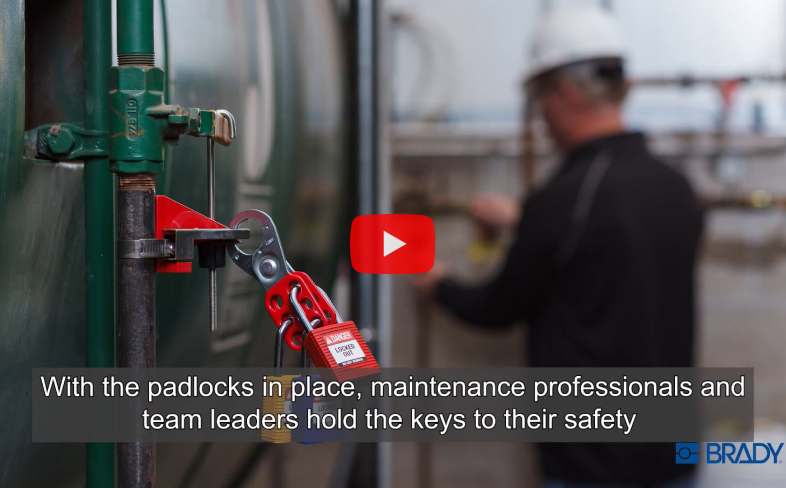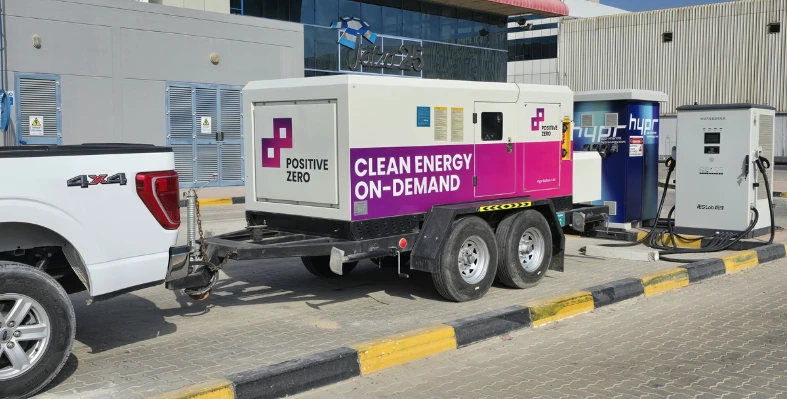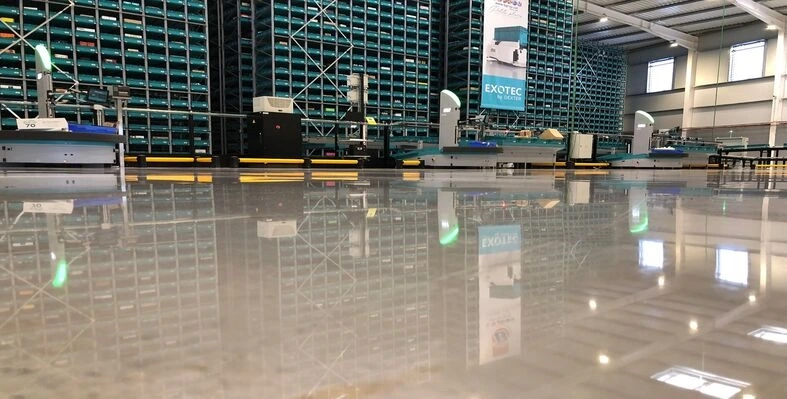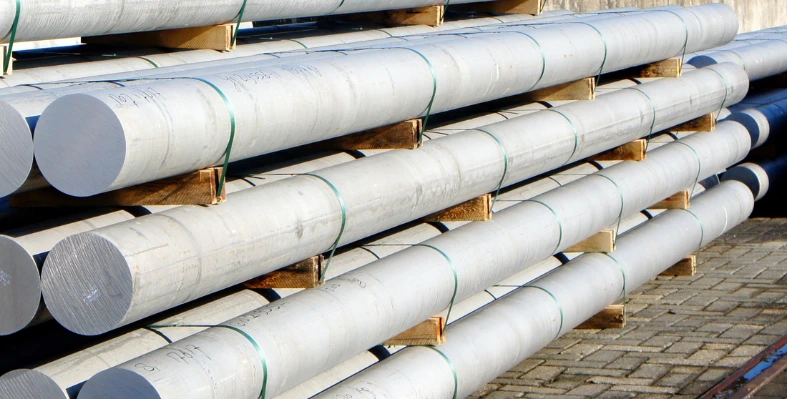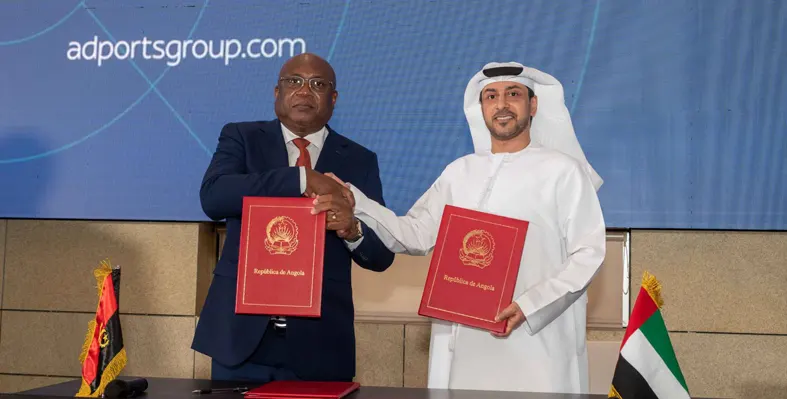In The Spotlight
SAF One and Airbus partner to promote SAF adoption
Airbus and SAF One, a provider of sustainable aviation fuel (SAF) solutions, inked a Memorandum of Understanding to work together to encourage the aviation sector's adoption of SAF.
Through greater use of SAF, the partnership aims to assist the aviation sector in achieving its decarbonisation objectives. Through a variety of advocacy efforts, the two businesses will collaborate to promote SAF adoption in the UAE and around the world.
The area has a lot of potential for SAF manufacturing and adoption because it is a major centre for international aviation. Its strong aviation industry, strong infrastructure, and strategic position make it the perfect place to scale SAF programmes. By encouraging domestic manufacturing and strengthening the supply chain, the area can significantly contribute to satisfying the expanding demands of the sector and quickening the shift to more sustainable air travel.
"We are pleased to partner with Airbus in our efforts to advance the adoption of sustainable aviation fuel," said Mounir Kuzbari, director and co-founder at SAF One. "Through this collaboration, we will jointly engage with airlines to promote SAF adoption as well as support in promoting the use of SAF produced by SAF One's multiple facilities. By combining our respective airline networks and relationships, this coordinated approach to market development will help address the growing demand for SAF."
“Partnering with SAF One supports our commitment to advancing SAF production to help meet the growing industry demand. Strengthening the SAF ecosystem requires collaboration across the industry, and partnerships such as this play a vital role in scaling production and accelerating availability,” said Alexandros Kosmas, head of international cooperation Middle East & Africa at Airbus.
UAE growth
The company stated earlier this year that it has acquired Green Biotrade, a feedstock and biofuels trading company based in the UAE. Through this strategic acquisition, SAF One will acquire vital feedstock for its sustainable aviation fuel projects and improve its supply chain capabilities.
They hope to improve their capacity to find, acquire, and oversee the vital biomass supplies required for their SAF production by incorporating Green Biotrade's vast trading experience and strong feedstock network.
According to Hani Samsam, CEO and founder of Green Biotrade, This integration will also allow them to grow and expand their capabilities in feedstock and biofuels, enabling them to further drive innovation and contribute more broadly to the advancement of sustainable energy solutions.
SAF One has said that its mission is to provide innovative solutions with the aim of reducing carbon emissions and supporting the transition to a more sustainable future for aviation.
Also read: SAF MENA Congress to drive decarbonisation efforts in Abu Dhabi
Hellmann introduces automated storage robots
At Hellmann's eCommerce Fulfilment Centre at Dubai CommerCity (DCC), Hellmann Worldwide Logistics have installed robotic automated storage systems.
Hellmann Worldwide Logistics has launched a new programme that enables logistics companies around the region to increase storage space, improve operational efficiency, and speed up product delivery to the market.
Based on the newest robotics technology, Hellmann's creative UAT programme provides factories and warehouses with adaptable, dependable, thorough, high-quality, and effective solutions.
Additionally, it offers blockchain management for a variety of industries, enabling businesses to use smart technologies to improve and automate their logistical services, increasing productivity, corporate growth, and operational expansion.
Growing UAE's logistics space
Underpinned by an integrated infrastructure and digital ecosystem that conform to the highest international standards and best practices, DCC provides a wide variety of advantages along with an extensive bundle of logistical services and cutting-edge technologies.
By supporting sustainable growth, guaranteeing business continuity, and embracing the idea of digital trade across all of its operations and services, DCC seeks to satisfy the demands of the businesses who operate there.
With its prime location in the Logistics Cluster of Dubai CommerCity, Hellmann Worldwide Logistics' eCommerce Fulfilment Centre uses the newest technological developments and digital solutions to manage logistics operations and innovations to increase the effectiveness of supply chains and cargo handling procedures.
Abdulrahman Shaheen, senior vice president of property management and supply chain at Dubai CommerCity, said, “We are committed to supporting various innovative and digital solutions that elevate the operational processes of companies within Dubai CommerCity. Hellmann’s innovative programme for advanced logistics services, which utilises robotics technology, adds significant value to the range of leading technologies and services available in our free zone. This programmenot only supports the growth of companies in the logistics sector but also facilitates their business expansion, enhances the quality and excellence of logistical operations, and accelerates their efficiency and responsiveness to market demands.”
This type of smart innovation marks a qualitative leap forward, aligning with Dubai CommerCity’s vision to offer the best logistics service technologies. By incorporating cutting-edge solutions such as robotics, AI, and advanced supply chain management, we are enhancing our efforts towards a complete digital transformation, reinforcing Dubai’s position as a global hub for the digital economy and the most advanced and innovative logistics services."
Francois Coron, managing director of Hellmann UAE, said, "We are excited about this innovative development. Our investment in robotics solutions will significantly enhance our speed, accuracy, and efficiency, leading to increased warehouse productivity with real-time monitoring and volume flexibility. With our centralised location at Dubai CommerCity and by working closely with our customers, we are providing a comprehensive eCommerce fulfillment centre that meets all business needs and goals with end-to-end logistics solutions for both B2B and B2C models. This development resonates with our mission to provide reliable integrated logistics solutions powered by technology, expertise, and entrepreneurial spirit."
Also read: AD Ports invests in Angolan logistics
The future of water management and why action is needed now
As climate change intensifies water scarcity, pollution, and extreme weather events, the need for smarter water management has never been more pressing.
Gregg Herrin, Bentley Systems vice president for water, explains how digital twins offer a transformative solution, enabling utilities and governments to optimise water resources, enhance sustainability, and safeguard communities. With aging infrastructure and rising environmental challenges, adopting these technologies now is not just an opportunity—it is an urgent necessity. This the last article in this series.
The examples shown earlier illustrate what’s possible when digital twins are used to address water issues at the source. Even as these problems become more severe, technology is continuing to adapt and evolve.
By leveraging digital twins, the water management sector can optimise source water management, improve sustainability, and enhance overall water security, ensuring that utilities can meet the demands of their customers while protecting and sustaining vital water resources.
Climate urgency
Urban planners, governmental leaders, and other stakeholders are also at a crossroads. As climate change results in more damaging storms, droughts, and depleted or polluted water supplies, delivering clean water to support both people and the environment, along with elevating agriculture while preserving natural habitats, will become an even greater challenge.
We have not only an opportunity but also an ethical obligation to leverage technology toward these goals, transforming the water management sector in a way that is both climate change-proof and sustainable.
The time to implement these solutions is now, before it’s too late. With increasing pressure from climate change, aging infrastructure, and regulatory and environmental requirements, the opportunity to fundamentally change the way we manage water for the better, by using digital solutions, is tangible and present.
Digital twins provide the predictive and real-time capabilities to respond to these dynamic conditions—and the beneficiaries of these digitally driven decisions are not only today’s communities, but those of the future.
In a previous post, we looked at how digital twins can ensure sustainable practices and help conserve water. Advanced technologies like smart meters, real-time data analytics, IoT, AI, and digital twins are transforming water management by enhancing monitoring, improving predictive capabilities, and enabling more informed decision-making. These innovations help minimise water waste and safeguard supplies from contamination.
We also highlighted a few case studies in this regard. The Sacramento Regional Sanitation Department began upgrading its water management infrastructure in 2010 to address California’s chronic water shortages. The EchoWater Project, a US$2.1bn initiative managed by Project Controls Cubed (PC3), aimed to meet new discharge standards and provide high-quality recycled water for local agriculture.
SAF One and Airbus partner to promote SAF adoption
Airbus and SAF One, a provider of sustainable aviation fuel (SAF) solutions, inked a Memorandum of Understanding to work together to encourage the aviation sector's adoption of SAF.
Through greater use of SAF, the partnership aims to assist the aviation sector in achieving its decarbonisation objectives. Through a variety of advocacy efforts, the two businesses will collaborate to promote SAF adoption in the UAE and around the world.
The area has a lot of potential for SAF manufacturing and adoption because it is a major centre for international aviation. Its strong aviation industry, strong infrastructure, and strategic position make it the perfect place to scale SAF programmes. By encouraging domestic manufacturing and strengthening the supply chain, the area can significantly contribute to satisfying the expanding demands of the sector and quickening the shift to more sustainable air travel.
"We are pleased to partner with Airbus in our efforts to advance the adoption of sustainable aviation fuel," said Mounir Kuzbari, director and co-founder at SAF One. "Through this collaboration, we will jointly engage with airlines to promote SAF adoption as well as support in promoting the use of SAF produced by SAF One's multiple facilities. By combining our respective airline networks and relationships, this coordinated approach to market development will help address the growing demand for SAF."
“Partnering with SAF One supports our commitment to advancing SAF production to help meet the growing industry demand. Strengthening the SAF ecosystem requires collaboration across the industry, and partnerships such as this play a vital role in scaling production and accelerating availability,” said Alexandros Kosmas, head of international cooperation Middle East & Africa at Airbus.
UAE growth
The company stated earlier this year that it has acquired Green Biotrade, a feedstock and biofuels trading company based in the UAE. Through this strategic acquisition, SAF One will acquire vital feedstock for its sustainable aviation fuel projects and improve its supply chain capabilities.
They hope to improve their capacity to find, acquire, and oversee the vital biomass supplies required for their SAF production by incorporating Green Biotrade's vast trading experience and strong feedstock network.
According to Hani Samsam, CEO and founder of Green Biotrade, This integration will also allow them to grow and expand their capabilities in feedstock and biofuels, enabling them to further drive innovation and contribute more broadly to the advancement of sustainable energy solutions.
SAF One has said that its mission is to provide innovative solutions with the aim of reducing carbon emissions and supporting the transition to a more sustainable future for aviation.
Also read: SAF MENA Congress to drive decarbonisation efforts in Abu Dhabi
The future of water management and why action is needed now
As climate change intensifies water scarcity, pollution, and extreme weather events, the need for smarter water management has never been more pressing.
Gregg Herrin, Bentley Systems vice president for water, explains how digital twins offer a transformative solution, enabling utilities and governments to optimise water resources, enhance sustainability, and safeguard communities. With aging infrastructure and rising environmental challenges, adopting these technologies now is not just an opportunity—it is an urgent necessity. This the last article in this series.
The examples shown earlier illustrate what’s possible when digital twins are used to address water issues at the source. Even as these problems become more severe, technology is continuing to adapt and evolve.
By leveraging digital twins, the water management sector can optimise source water management, improve sustainability, and enhance overall water security, ensuring that utilities can meet the demands of their customers while protecting and sustaining vital water resources.
Climate urgency
Urban planners, governmental leaders, and other stakeholders are also at a crossroads. As climate change results in more damaging storms, droughts, and depleted or polluted water supplies, delivering clean water to support both people and the environment, along with elevating agriculture while preserving natural habitats, will become an even greater challenge.
We have not only an opportunity but also an ethical obligation to leverage technology toward these goals, transforming the water management sector in a way that is both climate change-proof and sustainable.
The time to implement these solutions is now, before it’s too late. With increasing pressure from climate change, aging infrastructure, and regulatory and environmental requirements, the opportunity to fundamentally change the way we manage water for the better, by using digital solutions, is tangible and present.
Digital twins provide the predictive and real-time capabilities to respond to these dynamic conditions—and the beneficiaries of these digitally driven decisions are not only today’s communities, but those of the future.
In a previous post, we looked at how digital twins can ensure sustainable practices and help conserve water. Advanced technologies like smart meters, real-time data analytics, IoT, AI, and digital twins are transforming water management by enhancing monitoring, improving predictive capabilities, and enabling more informed decision-making. These innovations help minimise water waste and safeguard supplies from contamination.
We also highlighted a few case studies in this regard. The Sacramento Regional Sanitation Department began upgrading its water management infrastructure in 2010 to address California’s chronic water shortages. The EchoWater Project, a US$2.1bn initiative managed by Project Controls Cubed (PC3), aimed to meet new discharge standards and provide high-quality recycled water for local agriculture.
Light + Intelligent Building Middle East concludes
The 18th edition of Light + Intelligent Building Middle East, concluded last week at the Dubai World Trade Centre.
This year’s event saw 442 exhibitors from 34 countries showcase the latest advancements in lighting, smart home solutions, and building automation technologies.
The event’s theme, 'Building Commonality Through Community, Creativity, and Culture,' set the tone for a series of groundbreaking product launches, international collaborations, and thought-provoking discussions.
Among the standout innovations was Spectrum Lighting’s new wireless-powered technology, which promises to revolutionise efficiency and sustainability in the lighting industry.
Another significant launch came from the Chartered Institute of Building Services Engineers, which unveiled its Methodology For Calculating Embodied Carbon In Building Services. This new guideline is expected to play a crucial role in redefining sustainability practices in the region.
Global Collaboration
The event also hosted the Global Associations Meet, a high-profile networking event that brought together over 100 industry leaders and representatives from major global lighting associations, including the Illuminating Engineering Society (IES), the International Association of Lighting Designers (IALD), and the Society of Light and Lighting (SLL).
Workshops led by the IES and SLL explored unified lighting standards and methodologies, fostering a global dialogue on best practices. Additionally, a dedicated designers' gallery showcased the work of top lighting design studios from the UAE, offering visitors a glimpse into the latest trends and innovations in lighting design.
In a unique initiative to support the next generation of industry professionals, students from the University of Sharjah presented innovative luminaire designs, demonstrating fresh perspectives and creative solutions in lighting technology. Art and technology also took centre stage with The Moving Hues 2.0, an immersive light art installation. It captivated audiences with its dynamic interplay of light, motion, and translucent layers, evoking the organic beauty of nature.
The Light Middle East Awards, now in its 11th edition, celebrated the best in regional and international lighting projects, products, and designers. The awards ceremony, the largest to date, brought together 550 global industry leaders who are shaping the future of lighting design and technology.
The 19th edition of the event is already in the works, scheduled to take place from 12–14 January 2026 at the Dubai World Trade Centre.
Abdul Muhsin, show director for Light + Intelligent Building Middle East, said, “This year’s event has been our most successful yet, with a hattrick of achievements, including increases in exhibitor and visitor numbers and exhibition space growth as a result of this demand. The show's continued growth underscores the Middle East’s rising influence in the global lighting and building technology landscape, driven by increased investment in smart cities, sustainable design, and cutting-edge innovation.
“We’re delighted to see the continued evolvement of the event into a global hub where professionals, designers, and technology leaders come together to shape the future of lighting, smart home and building automation solutions.”
Egypt advances mining at Indaba 2025
Egypt’s Minister of Petroleum and Mineral Resources, Karim Badawi, spoke at the ministerial session of African Mining Indaba, held in Cape Town from 3–6 February 2025
The session, themed “Forging a United African Mining Front: Collaboration for Sustainable Development,” brought together key leaders, including South Africa’s Minister of Mineral Resources and Petroleum, Gwede Mantashe; the Democratic Republic of Congo’s Minister of Mines, Kizito Pakabomba Kapinga Mulume; and Zambia’s Minister of Mines and Mineral Development, Paul Kabuswe. The discussion was moderated by Marit Kitao, Director of the African Mineral Development Centre.
Badawi outlined Egypt’s progress in modernising its mining sector, emphasising that reforms are beginning to yield tangible results. He highlighted the country’s vast mineral potential and the government’s commitment to attracting investment through its new programme, which aligns with Egypt Vision 2030. The goal is to position Egypt as a key player in the global mining industry.
Modernisation
He also underscored Egypt’s dedication to fostering sustainable partnerships in the mining sector. He pointed to the recent finalisation of an updated Mineral Exploitation Agreement Model as evidence of efforts to enhance the investment climate. This new framework, he noted, is designed to create mutual benefits for stakeholders while supporting comprehensive modernisation strategies.
Further, Badawi detailed ongoing efforts to develop strategies for value-added mining industries and for managing the environmental and social impacts of mining activities. He also outlined the country’s strategy for maximising critical minerals to support the energy transition.
He announced plans for the Egyptian Digital Mining Platform, modeled after the Egyptian Upstream Gateway (EUG), which will offer detailed geological data and facilitate transparent investor engagement with the Egyptian Mineral Resources Authority.
AquaChemie opens its largest chemicals manufacturing facility
AquaChemie, a prominent player in the regional chemicals industry, has unveiled its new state-of-the-art manufacturing facility, AquaChemie Global Chemicals (ACGC), at the Khalifa Economic Zone Abu Dhabi (KEZAD).
The facility is built on a 25,804 sqm site with an initial investment of US$25mn.
At the opening ceremony of the factory, V Anandkumar, the founder and managing director of AquaChemie, said, "We've been moving towards being local and how to bring in multinational product lines, specialty chemicals, and bring it to this country and produce it here, adding value to localisation...we started our journey in building this facility in 2022, and we already have close to around US$50mn to US$60mn worth of chemicals to be supplied to ADNOC and other companies here. We found global partners who are willing to come and partner with us and produce those products here."
"We are also looking for some more acquisition in the near future within UAE," he added.
By localising production, the facility will reduce the region’s dependence on imported specialty chemicals, which have historically been costly and time-consuming to procure. The company said it will support the UAE's ‘Make it in the Emirates’ initiative.
Circular economy
AquaChemie’s new plant is strategically positioned to meet the growing demand for oil and gas upstream chemicals, particularly for ADNOC and other major regional players. It will also cater to industries such as paints, coatings, and construction, providing high-quality, locally produced chemicals that reduce costs and lead times.
Speaking to Technical Review Middle East about incorporating renewables, Anandkumar said, "We're already planning to put solar panels on the top of this facility. We are also taking a step towards a green chemistry. Today, [the industry] is using very unconventional chemistries so we are also working towards how to substitute them without compromising on the performance. With the daily operations also, we are trying to reduce the carbon footprint as much as possible."
The facility will also aid in the construction industry. "A lot of cement additives go into buildings. There are a lot of chemicals added into those readymixes. Readymix has a lot of products, so we provide those products to the companies which are making those readymixes."
There are at least 12 emergency safety showers installed at the factory, according to Anandkumar. Shobitha Anand, executive director of AquaChemie Global Chemicals, said, "we want to be as compliant as possible
with the whole facility."
AquaChemie’s new manufacturing facility leverages significant advantages, including reduced utility costs, tax exemptions, duty benefits, and a seamless export network across the GCC. These cost savings are directly passed on to customers, enhancing operational efficiency and affordability.
The plant is equipped with advanced features, such as reactors for processing both liquid and solid chemicals, precision blending and mixing technologies, dedicated R&D infrastructure for product innovation and quality control, and a storage capacity of 7,200 metric tons, supported by four liquid storage tanks.
Also read: EGA can now produce ASI-certified metal
UAE maps air corridors for cargo drones and air taxis
The UAE has initiated the process of mapping air corridors and developing a legal framework for cargo drones and piloted and autonomous air taxis, according to a statement from the country's General Civil Aviation Authority (GCAA).
The agreement was announced during World Governments Summit 2025.
The GCAA and the Advanced Technology Research Council (ATRC) organisations, ASPIRE and the Technology Innovation Institute (TII), are collaborating to accomplish this.
These aerial corridors and regulations set to be defined within the next 20 months, with the routes connecting key international airports and iconic places in the UAE.
The statement added that these new air corridors will offer innovative solutions for passenger and cargo transport, relieving pressure on traditional road networks and improving connectivity.
The employment of autonomous aircraft in urban and suburban environments to provide creative transportation options for people and commodities is known as advanced air mobility, or AAM.
Future-focused
This partnership intends to create a comprehensive regulatory framework that guarantees safety and operational efficiency, with TII spearheading the development of AAM's technical aspects and ASPIRE concentrating on building a network of stakeholders, including regulators, industry leaders, and researchers.
His Excellency Saif Mohammed Al Suwaidi, director general of the GCAA, said, “Air corridor mapping for piloted and autonomous air taxis and drones is a crucial milestone that will enable the seamless implementation of Advanced Air Mobility into the UAE’s infrastructure. This initiative ensures the safe and efficient adoption of air mobility, delivering transformative solutions to urban transport and paving the way for a smarter, more connected future.”
Dr. Najwa Aaraj, CEO of TII, said, "This transformative collaboration with GCAA is reshaping the future of urban transportation. By advancing airspace management and integrating piloted and autonomous air taxis and cargo drones, we are not only enhancing urban connectivity but also driving sustainable and accessible mobility solutions that will benefit future generations."
Stephane Timpano from ASPIRE, said, "Addressing real-time urban mobility challenges through innovative solutions like air taxis and drones is a major step forward. This initiative directly supports sustainable economic growth by creating a flexible and diverse transport system that eases pressure on urban infrastructure and fosters smarter, more resilient cities."
Prof. Enrico Natalizio, Chief Researcher of the Autonomous Robotics Research Center at TII, said, "At TII, we’re developing advanced AI-powered control, vision and communication algorithms for autonomous systems that enable real-time decision-making for air taxis and drones. Having mastered this technology, we are able to propose methodologies for AAM corridors design to optimise routes, ensure collision avoidance, and integrate seamlessly with urban airspace, marking a key step toward efficient and safe autonomous air mobility in complex urban environments."
Also read: Hellmann introduces automated storage robots













